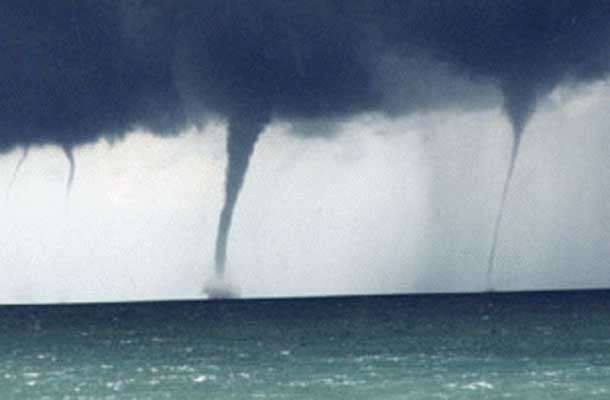
The National Oceanic and Atmospheric Administration reports, “Sometimes a true tornado forms over land before heading over the water and becoming a waterspout”.
“The majority of waterspouts on the Great Lakes are like the other lake effects we see in Michigan: they result from temperature differences between the water, and the air or nearby land. The National Weather Service usually predicts waterspout activity when water temperatures are warm, the air is cool and moist, and winds are relatively light. That is most likely to be the case in late summer and early fall when the lakes are at their warmest, but we can get blasts of colder air”.
Tracking Waterspouts
Meteorologists, led by the International Centre for Waterspout Research, are just beginning to track waterspouts closely and to predict them. The Centre counted a new record of 154 waterspouts for the Great Lakes in 2012. When observers on Lake Ontario logged a single day global record of sixty-seven last October, Centre director Wade Szilagi said there had probably been even more that simply weren’t seen or recorded.
The Lake Effects Weather Exhibit
Lake Effects, the current special exhibit at the Michigan Historical Museum, closes August 24. On Saturday, August 9, Families can participate in “Icy August,” with hands-on activities showing how Michiganians have kept cool in the summer. Museum admission is free on August 9, courtesy of CASE Credit Union.
